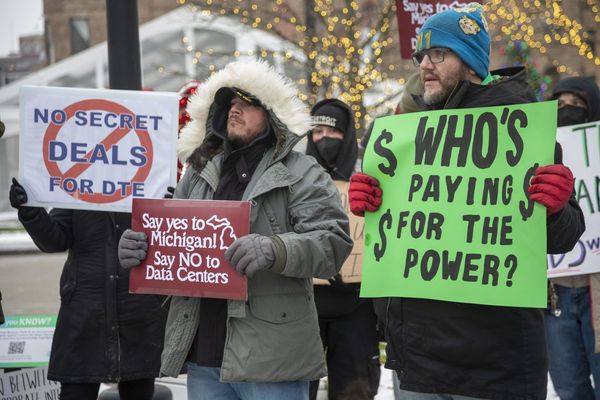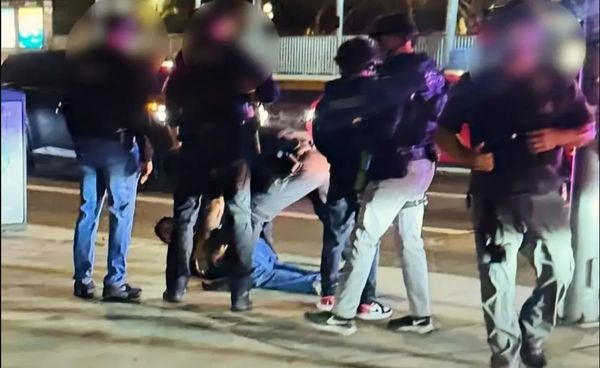
I could get access to a gun within an hour of walking out of jail, no problem at all.
You’d find a farmhouse, knock on the door. No one answers the door so you go in for a nosy. All farmers have got guns.
These comments from people in Australian jails convicted of serious gun-related crimes provide a rare insight into how weapons find their way into illicit markets, despite some of the strictest firearm laws in the world.
New data obtained by Guardian Australia shows that over the past five years more than 9,000 firearms have been reported stolen – but the picture is far from complete.
These prisoner interviews, conducted between 2015 and 2018 by researchers at Deakin and Flinders universities, were an attempt to address our gap in knowledge about how criminals obtain firearms.
Often guns are found through organised crime networks or by knowing the “right guy” but interviewees also revealed how licensed weapons filter through to the underworld. As one prisoner explained:
Anyone with a gun licence, if you knew them, they would go buy you a new gun, right?
Then they can report it missing or stolen – lost – whatever, and there would be no investigation.
Firearms ‘falling through the cracks’
The size of the illegal firearm market in Australia is unknown, ranging from official government estimates of 260,000 weapons in circulation to as many as 600,000.
When asked for firearm theft data, police and crime statistics agencies in Victoria, New South Wales, Queensland, Tasmania and South Australia were able to provide information for the past five years.
The Northern Territory did not provide any figures, while limited data from the Australian Capital Territory and Western Australia allowed for estimates only.
The lead researcher on the study, Prof David Bright of Deakin University, says theft and “straw purchasing” – when a licensed firearm holder buys weapons for criminals – are two ways licensed weapons end up in the wrong hands.
“We know that thefts of firearms is one way that guns move from the legal market to the illegal market,” Bright says. “Most of the time they are legitimate thefts but sometimes they are set up.”
Sign up: AU Breaking News email
One of those interviewed for the 2022 study revealed: “All the people I got my guns from had licences and they’d dealt in pistol clubs and rifle ranges.”
Another described obtaining firearms by using “a cleanskin” – someone without a criminal record – by paying them to get a licence and buy weapons before staging a break-in.
The NSW Bureau of Crime Statistics and Research reveals that rifles are the most commonly stolen type of firearm in the state, followed by shotguns, pistols and revolvers. Less than 15% are recovered.
Other states were unable to provide recovery figures.
In Queensland the data shows that more than 3,000 firearms were stolen from 2020 to 2024, including semi-automatic shotguns and rifles, and more than a dozen category R weapons. This includes machine guns and fully automatic large-calibre military weapons.
Safe storage is not always a deterrent. A 2020 research paper from the Australian Institute of Criminology showed that most stolen firearms had been kept in gun safes but these had been opened by finding the key or by using force, or the entire safe was taken.
Bright says there is a dearth of information about how often licensed firearms are used in crimes but it’s clear many are “falling through the cracks”.
“Because all of the states have a different way of recording it, it’s hard to collate and collect that information,” he says.
“That is fundamentally the problem we have – any source of firearms crime data is murky and messy …
“We just don’t know.”
The push for a national firearms register
Police Federation Australia’s president, Alex Caruana, says the theft of firearms is one reason there needs to be more urgency in the shift towards the national firearms register, a plan signed off on by states and territories in 2023.
The creation of a national register – a priority for law enforcement and gun control advocates since the 1996 Port Arthur massacre – was put back on the agenda after the 2022 shooting of two police officers and a neighbour in Wieambilla, Queensland.
The NFR, providing a real-time “life-cycle view” of registered firearms and licences, is meant to be up and running by mid-2028.
“If you were able to track the firearms from the cradle to the grave and patterns were found, it would give you something to look at,” Caruana says.
“If it’s stolen in Queensland and used in a crime in WA it can take days to figure out where it came from, but if it was all in a national database, we would be able to see immediately that it was stolen and trafficked across.”
But Guardian Australia has found that the NFR rollout has missed some key milestones.
One significant challenge was standardising how data is entered. This was meant to occur by 1 October 2024, according to the state schedules, but was delayed until March.
The register’s June newsletter says “one of our biggest achievements” was all partner agencies agreeing on an approach to achieve consistent data, with some bureaucrats commenting on the difficulties of “uplifting paper-based registries” to digital.
Critics say the Australian Firearms Information Network, the current national database, has been hampered by poor resourcing and record-keeping at some state registries.
More than $101m was required for the states to upgrade their systems in the move towards the NFR.
A 2020 state auditor report found that Queensland’s licensing system was “not accurate and up to date”, relying on “inefficient manual data entry and cannot provide real-time information”.
“It cannot be certain that firearms are not entering the illegal market,” the report said.
On the state government’s digital projects dashboard, the weapons licensing management system replacement is still marked as red due to procurement delays.
In the Northern Territory, all firearms licence holders are being asked to complete a self-check form, which includes sending in at least five photos of a firearm to ensure it can be properly identified.
A spokesperson for the Department of Home Affairs says the commonwealth and state and territory governments remain committed to a fully operational NFR by 1 July 2028.
Other states are also looking at reforms enacted in WA that limit the number of guns an individual can own – a move likely to inflame gun lobby groups.
The WA police minister, Reece Whitby, told Guardian Australia that “other states are looking at our nation-leading firearm laws”, which include health checks.
“I encourage other states to consider the changes we’ve made to our new laws, which make WA the safest place in the world to live in, and help keep police officers and the community safe from firearm related tragedies.”
In the wake of the Porepunkah shooting, this push may garner further support.
SA and the ACT confirm that legislative changes are being considered.
The SA police minister, Stephen Mullighan, says work has started on changing the state’s laws “to support more effective and consistent firearms management across the country”.
The NSW senator David Shoebridge says the register is an opportunity to tighten loopholes in gun laws – in particular the “genuine reason” requirement. Being a member of a sport shooting club is now a “genuine reason” to hold a gun licence – but Shoebridge says this increases membership of such clubs and means “millions of unregulated dollars” flow to the gun lobby each year.
“What many people are anxious about is the pressure the gun lobby would be putting on states and territories to adopt the lowest common denominator and that would be a disaster for gun safety,” he says.
Bright agrees the register could help keep track of stolen firearms and other guns that slip off the radar when firearm holders move interstate.
“If the registering and licensing of firearms is kept track of, particularly between states, it means firearms are less likely to be lost into the black market,” he says.
The best public interest journalism relies on first-hand accounts from people in the know.
If you have something to share on this subject you can contact us confidentially using the following methods.
Secure Messaging in the Guardian app
The Guardian app has a tool to send tips about stories. Messages are end to end encrypted and concealed within the routine activity that every Guardian mobile app performs. This prevents an observer from knowing that you are communicating with us at all, let alone what is being said.
If you don't already have the Guardian app, download it (iOS/Android) and go to the menu. Select ‘Secure Messaging’.
SecureDrop, instant messengers, email, telephone and post
If you can safely use the tor network without being observed or monitored you can send messages and documents to the Guardian via our SecureDrop platform.
Finally, our guide at theguardian.com/tips lists several ways to contact us securely, and discusses the pros and cons of each.







